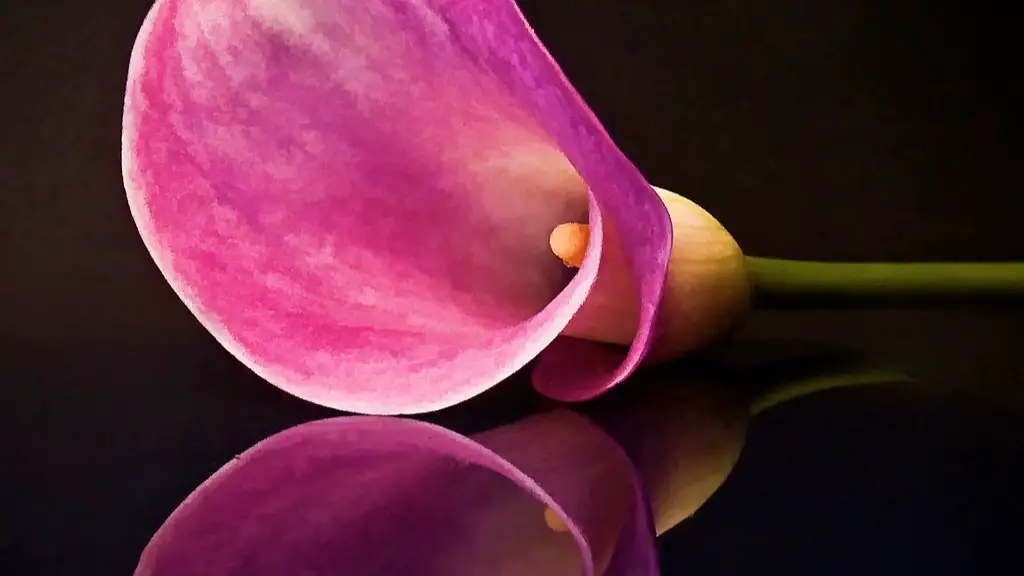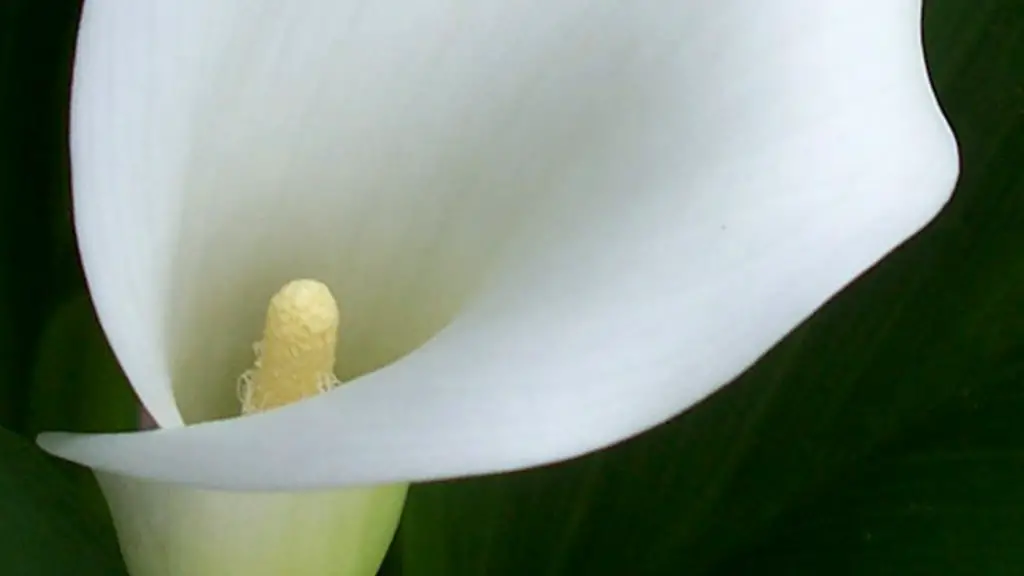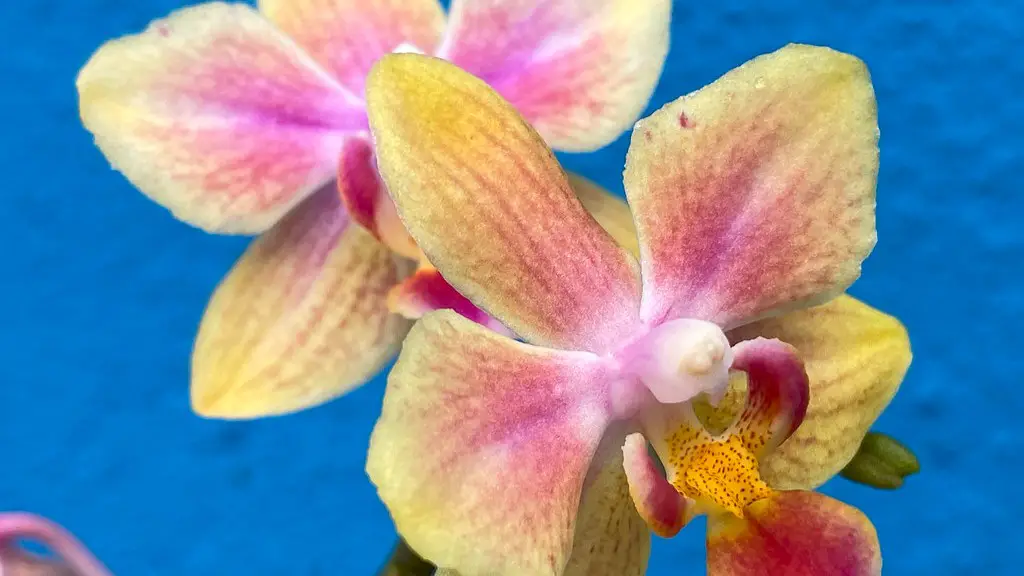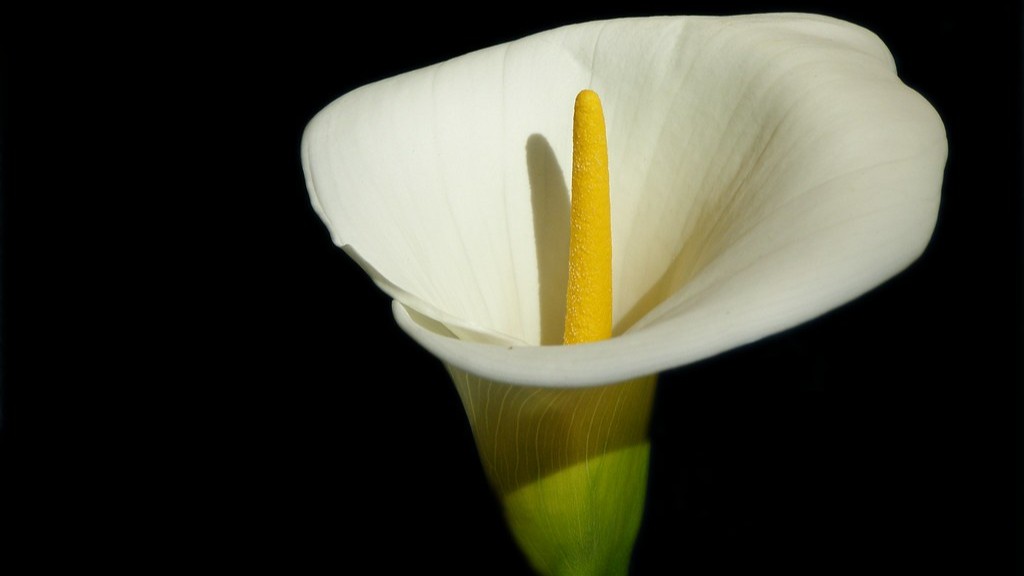A calla lily is a flowering plant that is part of the Araceae family. The plant has a long, slender stem and large, trumpet-shaped flowers. Calla lilies are native to Africa, but they are also grown in other parts of the world. The flowers are often used in bouquets and arrangements.
A calla lily is a member of the Araceae, or aroid, family of plants. The scientific name for calla lily is Zantedeschia aethiopica. These plants are native to southern Africa, but they are now grown all over the world.
What does a calla lily symbolize?
The calla lily is a complex and interesting flower with a rich history. On the one hand, it is associated with life and fertility, while on the other it is a well-known symbol of death. One early calla lily meaning originates in ancient Greek culture, where the flower was thought to represent magnificent beauty. This origin stems from a tale regarding Hercules as a baby. The calla lily continues to be a popular and significant flower today, with its many different meanings providing something for everyone.
If you have a potted calla lily, you can keep it as a perennial and it will bloom again next year. Many people treat their calla lilies as annuals, but they are actually perennials. Just keep the pot and the plant will bloom again.
Is a calla lily an indoor or outdoor plant
Calla lily can be grown in a pot as an indoor houseplant, or outdoors during warmer months. When growing indoors, make sure to provide bright, indirect sunlight and water when the soil is dry to the touch. If growing outdoors, plant in a location with full sun to partial shade and well-drained soil. Be sure to bring your calla lily inside before the first frost.
There are a few key differences between calla lilies and canna lilies. Perhaps the most obvious is the shape of their leaves. Calla lilies have arrow-shaped leaves, which are always green. However, the leaves of canna lilies are elongated ovals – often described as being paddle-shaped. Canna lily leaves can be dark, light green, purple, or even bronze colored. Another difference is the size of the two flowers. Calla lilies tend to be smaller, with blooms that are around 3-6 inches in diameter. Canna lilies, on the other hand, can be much larger – with some varieties boasting blooms that are up to 12 inches wide! Finally, calla lilies typically bloom in shades of white, pink, or purple. Canna lilies, on the other hand, come in a wide range of colors, including red, orange, yellow, and pink.
Why are calla lilies toxic?
Do not chew or bite into this plant as it contains insoluble calcium oxalate crystals. These crystals can cause tissue penetration and irritation in the mouth and GI tract. In very rare cases, swelling of the upper airway may occur, making it difficult to breathe.
If you notice your calla lily or other plant dripping sap, it’s likely a sign that you’re overwatering. When roots are saturated, they can create pressure that forces the plant to release moisture (and nutrients) in the form of sap. To fix the problem, simply cut back on watering and your plant should stop dripping sap.
Do calla lilies multiply?
Calla lilies are a beautiful addition to any garden and spread easily by creating new bulbs. While they can be dug up and replanted in different locations, they are easy to control and make a great addition to any landscape.
If you live in a warm climate, you can leave your calla rhizomes in the ground over the winter. Otherwise, remove the leaves from your plants and cut the stems to one to two inches tall before your first freeze. Dig up the rhizomes and put them in a warm, dry place where the temperature stays between 65 and 75°F.
How long will a calla lily live
Calla Lilies are beautiful flowers that make great houseplants. They have a long vase life and are perfect for wedding bouquets and other fresh floral arrangements.
If you’re looking for a graceful and elegant plant to add to your home, consider the calla lily. These beautiful flowers grow well in pots and planters, and make a stunning addition to any space. Calla lilies do best on their own, but can also be mixed with other annuals. They’re easy to care for and the flowers last for weeks, making them a great choice for anyone looking for a low-maintenance plant.
Do calla lilies grow better in pots or in the ground?
Calla lilies are a beautiful addition to any garden, and they have the added benefit of being easy to care for. One of the great things about growing calla lilies in pots is that they can’t become invasive. In garden beds in their ideal climate, calla lilies may naturalize and take over, but in pots they are restricted and can’t cause any problems. This makes them a great choice for those who want to enjoy their beauty without having to worry about them taking over the garden.
If you want your calla lilies to bloom and look healthy, you need to water them regularly. Without enough water, they will appear stunted, with yellowed and wilted leaves. Make sure to give them enough water to keep their foliage healthy and encourage flowering.
Is calla lily a lucky plant
Native to South Africa, white calla lilies are said to be a good luck charm for wedded bliss. They require warm temperatures and adequate water but can be kept in bloom without too much fuss. With proper care, they can bloom year-round.
Calla lilies can be infested with fungus gnats, which are small insects that feed on the plant’s leaves and flowers. These pests can cause damage to the plant and decreased flowering. To control fungus gnats, keep the plant’s potting mix dry and water the plant only when the soil is dry to the touch. If you see fungus gnats on the plant, remove them with a hand-held vacuum or a damp cloth.
Are calla lilies rare?
These gorgeous flowers are not only beautiful, but also quite rare. Black calla lilies are not commonly found in nature, which makes them even more special. If you’re lucky enough to see one of these stunning flowers, take a moment to appreciate its unique beauty.
If you come in contact with a calla lily, you may experience burning, pain, and irritation. This is because the plant releases microscopic needle-like crystals. If you have a reaction to the plant, be sure to wash the area well with soap and water. You may also want to apply a cool compress or take a pain reliever.
Are calla lilies poisonous to touch
If you come into contact with the calla lily plant, it is likely that you will experience some irritation of the GI tract. This is because the plant contains some poisonous substances that can cause nausea, vomiting, and diarrhea. In severe cases, eating or swallowing any part of the plant can result in death. Therefore, it is important to be careful around this plant and to keep it away from children and pets.
Calla lilies are known for their ability to purify the air around them. They absorb carbon dioxide and release oxygen as part of the photosynthesis process. Additionally, lilies are known to absorb airborne pollutants such as benzene, formaldehyde, and trichloroethylene.
Final Words
A Calla lily is a beautiful flower that is most commonly found in shades of white, yellow, or pink. They are native to South Africa and have been grown there for centuries. Calla lilies are also known as Zantedeschia and are part of the Araceae family.
A Calla Lily is a flower that is native to South Africa. They are usually white or yellow in color and have a long stem. Calla Lilies are often used in bouquets and as decoration at weddings.





